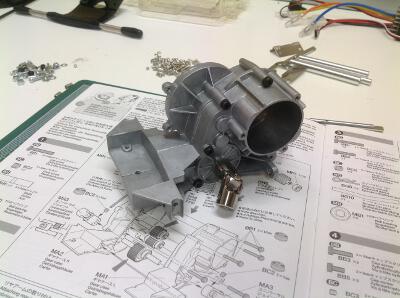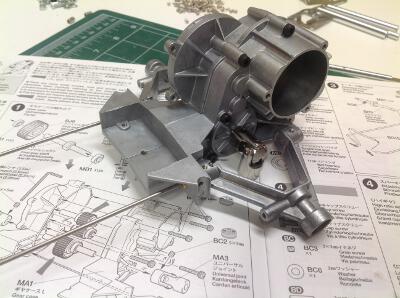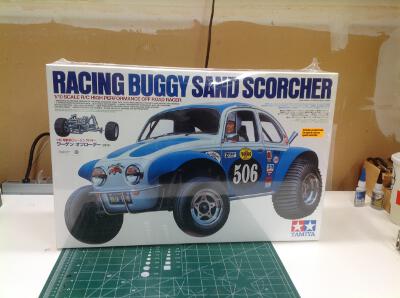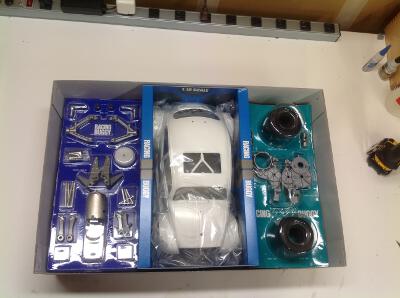

This shows the gearbox closed up with the universal
joint outdrives attached. In the right hand image I've attached
the rear suspension swing arms. (I was going to say lower arms but
there are no upper arms.) The model uses torsion bar
suspension. The long wire you see leaving the image to the left is
connected to each swing arm, and in front they are connected together
to prevent rotation. This results in a very soft, springy
suspension. I love it. The real Beetle uses swing arm
suspension like this but without a lower arm. Instead the axle
itself forms the support and thrust loads are carried by a radius arm
which also connects to a lateral torsion bar. This model uses a
longitudinal torsion bar connected to the lower arm.



